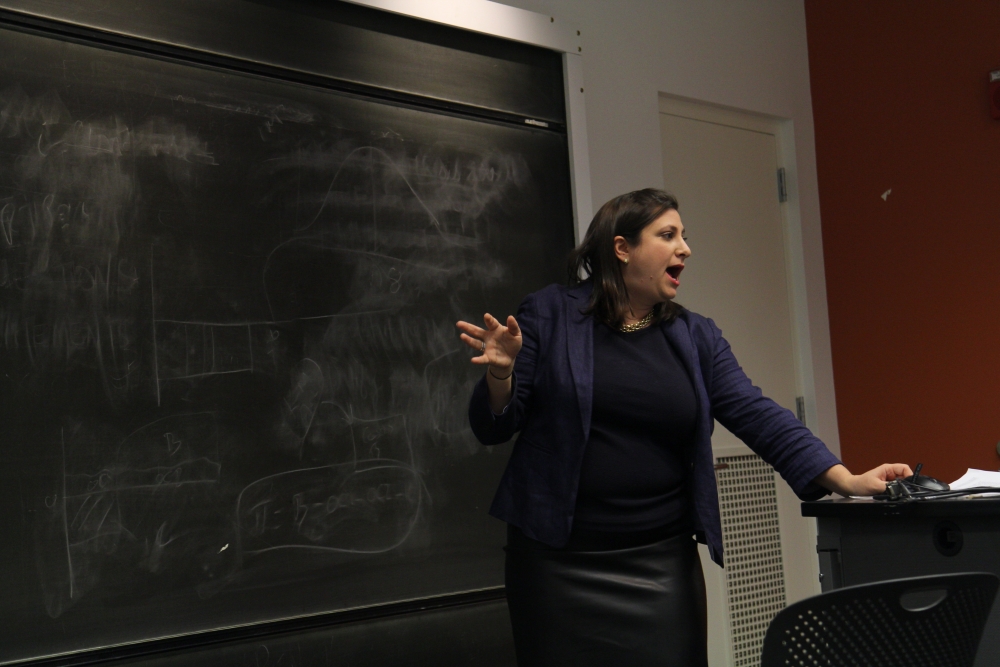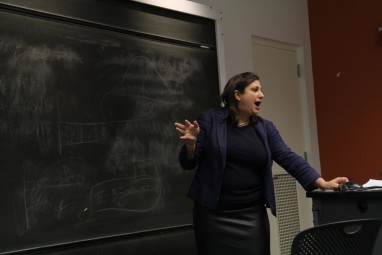
Scholar reflects on Rwandan genocide, more than 22 years down the line.
By Agape Niyobuhungiro, The Justice.
Although it has been more than 22 years since the 100-day Rwandan genocide, the wounds incurred in the conflict could still take more than one generation to heal, a scholar asserted in a discussion yesterday evening.
The scholar, Samantha Lakin ’08, delivered the talk on her findings from four years of research in Rwanda, a country that, despite its recovery from devastation, is still dealing with the legacy of its tragic past.
During her lecture, the Ph.D. candidate in Holocaust and Genocide Studies at Clark University summarized the main events that marked the genocide.
One million Tutsi and moderate Hutu were massacred in the small East African nation in the months from April to July 1994. It is estimated that 300,000 people survived the genocide, according to the Huffington Post. Lakin rejected the portrayal of the genocide as simply ethnic bloodletting, insisting, “It’s a very myopic and primitive way of viewing conflict in Africa.”
In the unique case of Rwanda, where survivors and perpetrators now live side-by-side, Lakin focuses her research on forms of justice that go beyond the traditional punishment of perpetrators. She explained that she interviews a wide range of individuals such as survivors, perpetrators and ordinary citizens in order to understand the impact of memory initiatives — which promote information and accountability — on justice. “When I’m interviewing people,” Lakin elaborated, “I’m asking about their relationship to other forms of justice that go beyond punishing perpetrators.”
With this in mind, the presentation shifted to mapping reconciliation efforts in memory, justice, youth and education, and psychological health and trauma. Lakin presented these four categories with particular attention to the stakeholders involved, the successes achieved so far and the considerable challenges that remain. With her research heavily grounded in field experience, the stories she told were drawn from both research and anecdotal evidence from her time living in Rwanda.
In the case of a genocide with such far-reaching effects, Lakin stressed the importance of sharing the memory of those individuals — such as elderly or sick survivors — who might be overlooked and have less of a chance of being heard. She shared the story of Omar, a child who, at age ten, survived by hiding underneath corpses after a mass killing in a church where he had sought shelter. Struggling to tell his story after the genocide, and finding many unreceptive to his account, Omar requested that Lakin interview him at the site of the massacre to underscore the emotional trauma he endured.
Lakin emphasized the key role that youths such as Omar can play in post-conflict Rwanda. “Sixty percent of Rwandans today are under the age of twenty-five, which means we have an incredible amount of young Rwandans doing incredibly important and incredibly difficult things,” she stated. In this context, the Rwandan government has made the education of the youth a priority. In the context of the genocide, the powerful potential of youths is especially significant in Rwanda, where the Interahamwe death squads were largely made up of young men.

HEALING WOUNDS: Samantha Lakin argued that reconciliation post-genocide could take more than one generation.
Lakin concluded her presentation by opening up her talk to discussion with the audience. During this segment, she shared her views on the possibility of full reconciliation in Rwanda: “The truth of the matter is oftentimes, it takes more than one generation for real healing or any kind of reconciliation to happen,” she said.
Additionally, she explained that she attempts to give back to the community in a variety of ways, including by educating Rwandans on other genocides, most notably the Holocaust. She explained that this relationship allows her research to be conducted in an atmosphere of mutual trust and respect.
“I think that people see me [as] legitimate within the community — thankfully — because of the work that I put in to develop the community. Every researcher gets a reputation,” she said.
